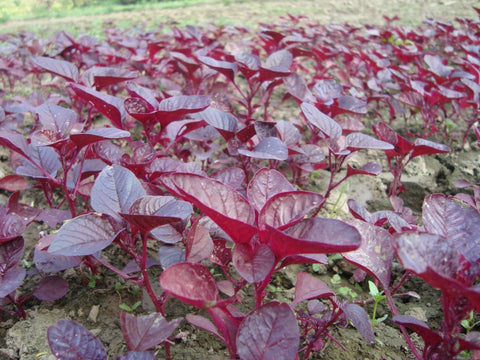Does Honey Increase Nitric Oxide?
Honey is a popular natural sweetener, but does honey increase nitric oxide? Many ancient civilizations praised honey as a powerful antioxidant and believed it to be a remedy against various illnesses. While there are potential benefits to honey, it also comes with downfalls.
Mainstream honey at the grocery store is sometimes unregulated. According to Irit Poraz, the Chief Dietician at Clalit Health Services, honey on the mainstream market is rarely genuine or confirmed for its levels of antioxidants, vitamins, and minerals. The health benefits of honey are largely dependent on the farmer and what they feed their honey bees. When bees collect nectar from a flower, they’re able to absorb the nutritional content from the plant. However, some honey is adulterated with sugar syrup and commercial sugars, which diminishes its health benefits.
Does honey increase nitric oxide?
Honey can be advantageous when it’s ethically sourced from bees naturally and harvested correctly; however, it can be difficult to regulate. Some honey variations are believed to increase nitric oxide in the body; however, with its high sugar content and a varying level of nitrate, it may be challenging to experience any benefits.
Scientific research does not show a strong connection between honey and boosted nitric oxide levels in the body. There is a multitude of other natural nitrate sources that supply a substantial nitric oxide boost. Several key foods that are high in nitrate and boost nitric oxide are listed below.
The Truth About Honey and Nitric Oxide

Honey can be part of a healthy diet when it is consumed in moderation. Local unpasteurized raw honey may assist with seasonal allergies, according to research from the University of Malaysia. However, honey should not be used as a go-to food to increase nitric oxide in the body. Does honey increase nitric oxide? It is perhaps more important to understand that honey is a sugar. Sugar decimates nitric oxide production, according to a study from the State University of New York. It is difficult to supplement the proper amount of nitrate by consuming honey alone, as levels are low, hovering between 1-100 mg/kg range depending on the variety, plant source, and quality.
Honey contains low amounts of antibacterial and antioxidant elements in proportion to its high levels of glucose and fructose. Moreover, consuming large quantities of honey has many downsides. A 2011 study revealed that a high intake of honey may actually inhibit nitric oxide levels in the body. Nitric oxide is produced when nitrate is converted to nitrite in the mouth. Honey increases the production of insulin in the body, which in turn limits nitric oxide production.
It is much better to boost nitric oxide levels by consuming other foods that are higher in dietary nitrate and antioxidants. These foods are nutritionally dense in vitamins and minerals, high in nitrate, and lower in sugar. While honey tastes good, it is not a sustainable dietary choice to use as a supplement for nitrate. For vegans, honey is not an option at all. A well-rounded diet of nitrate-rich vegetables boasts a multitude of benefits for the body, without the downsides of high sugar content found in honey.
Foods Lower in Sugar and Higher in Nitrate Than Honey

Instead of consuming honey for its nitrate, it is more important to remember that nitrates are best when eaten from low-sugar, nutrient-dense root vegetables and leafy greens. Foods that boost nitric oxide are more concentrated in nitrate and support healthy circulation.
Foods High in Nitric Oxide Potential
1. Beetroot and Beet Greens: Beetroot and beet greens offer a dense nutrient profile and are rich in nitrate. Nitrate in beets is converted into nitric oxide, which may help support healthy circulation. With 100 grams of beet juice, consumers can increase nitric oxide levels, receiving up to 20% of daily folate and 10% of daily potassium. A 2018 study suggests that beetroot juice decreased muscular fatigue and oxygen usage, leading to better athletic performance. There are many benefits to eating, drinking, or supplementing with the power of beets.
2. Red Spinach: When researching foods high in nitric oxide potential, the amaranth plant (aka red spinach) is a powerhouse. Red spinach is a great source for boosting nitric oxide, with about 5x higher nitrate levels than beets, making it one of the top nitrate-rich vegetables. A 2017 study showed that red spinach significantly improved time to exhaustion for older adults by supplying a beneficial amount of nitrate. The recommended amount of nitrate for improved sports endurance is 400mg.
3. Broccoli: Broccoli is rich in nitrates and an easy cruciferous vegetable to incorporate into everyday meals. It also contains the phytochemical “sulforaphane,” which has powerful antioxidant benefits.
4. Pomegranate: This fruit is an excellent source of antioxidants, which supports circulation and assists in preserving nitric oxide in the body for longer periods. This is beneficial when used in tandem with a rich-nitrate supplement like red spinach or beetroot.
Other foods that contain nitrate include:
- Arugula
- Bok choy
- Celery
- Swiss chard
- Green spinach
- Kale
- Mustard greens
- Rhubard
- Spirulina
- Fennel
- Parsley
- Cilantro
- Basil
How to Boost Nitric Oxide in Addition to Dietary Nitrate
When learning how to boost nitric oxide through methods in addition to diet, there are plenty of healthy habits to incorporate daily. Physical modalities to increase nitric oxide are best when combined with nitrate foods or supplementation for optimal results.
Practice Deep Breathing to Boost Nitric Oxide
A few minutes of deep breathing in through the nose can increase nitric oxide amounts significantly. Nose breathing encourages nitric oxide production in our paranasal sinuses that get transported to our lungs. SKY meditation, or deep nose breathing, can support a more tranquil state and increased nitric oxide levels.
Sunlight to Increase Dermal Nitric Oxide
Sunshine is a natural nitric oxide booster. A 2014 study revealed that when our skin is exposed to the sun, nitric oxide is produced naturally on our skin and in blood vessels. This process is vital for good circulation as it may help our blood vessels relax and deliver a healthy supply of oxygenated blood to all of our organs, tissues, and muscles.
Avoid Antibacterial Mouthwash
Mouthwash is beneficial in removing plaque buildup. It also kills the germs that cause bad breath. But it also kills naturally occurring bacteria in our mouth that converts nitrate to nitrite and then into nitric oxide. Some mouthwash products are also linked with the overgrowth of harmful bacteria and can disrupt the oral microbiome. Surprisingly enough, vegetables like kale, beetroot, and red spinach are being studied for maintaining oral health. Chewing kale can possibly help maintain a healthy oral microbiome. Nitrate-rich vegetables and extracts increase nitrate oxide and boast many full-body benefits.
The Takeaway on Honey and Nitric Oxide
There are no studies that directly support the commonly asked question: "Does honey increase nitric oxide?" There is not enough evidence to conclude that honey is a healthy or dependable nitric oxide booster. Honey may have health benefits when properly sourced, but it does not supply a sufficient amount of nitrate or accommodate a plant-based diet. Honey is high in sugar and not a great source of nitrate. Therefore, it is recommended to increase the intake of nitrate-rich vegetables to boost nitric oxide instead of honey. A red spinach supplement and beetroot supplement can be much more effective for boosting nitric oxide levels.
References
Al-Waili NS. Identification of nitric oxide metabolites in various honeys: effects of intravenous honey on plasma and urinary nitric oxide metabolites concentrations. J Med Food. 2003 Winter;6(4):359-64. doi: 10.1089/109662003772519921. PMID: 14977445.
Owoyele BV, Adenekan OT, Soladoye AO. Effects of honey on inflammation and nitric oxide production in Wistar rats. Zhong Xi Yi Jie He Xue Bao. 2011 Apr;9(4):447-52. doi: 10.3736/jcim20110415. PMID: 21486559.
Guler A, Kocaokutgen H, Garipoglu AV, Onder H, Ekinci D, Biyik S. Detection of adulterated honey produced by honeybee (Apis mellifera L.) colonies fed with different levels of commercial industrial sugar (C₃ and C₄ plants) syrups by the carbon isotope ratio analysis. Food Chem. 2014 Jul 15;155:155-60. doi: 10.1016/j.foodchem.2014.01.033. Epub 2014 Jan 24. PMID: 24594168.
Yaghoobi N, Al-Waili N, Ghayour-Mobarhan M, Parizadeh SM, Abasalti Z, Yaghoobi Z, Yaghoobi F, Esmaeili H, Kazemi-Bajestani SM, Aghasizadeh R, Saloom KY, Ferns GA. Natural honey and cardiovascular risk factors; effects on blood glucose, cholesterol, triacylglycerole, CRP, and body weight compared with sucrose. ScientificWorldJournal. 2008 Apr 20;8:463-9. doi: 10.1100/tsw.2008.64. PMID: 18454257; PMCID: PMC5848643.
Bahrami M, Ataie-Jafari A, Hosseini S, Foruzanfar MH, Rahmani M, Pajouhi M. Effects of natural honey consumption in diabetic patients: an 8-week randomized clinical trial. Int J Food Sci Nutr. 2009 Nov;60(7):618-26. doi: 10.3109/09637480801990389. PMID: 19817641.
Samarghandian S, Farkhondeh T, Samini F. Honey and Health: A Review of Recent Clinical Research. Pharmacognosy Res. 2017 Apr-Jun;9(2):121-127. doi: 10.4103/0974-8490.204647. PMID: 28539734; PMCID: PMC5424551.
Asha'ari ZA, Ahmad MZ, Jihan WS, Che CM, Leman I. Ingestion of honey improves the symptoms of allergic rhinitis: evidence from a randomized placebo-controlled trial in the East coast of Peninsular Malaysia. Ann Saudi Med. 2013 Sep-Oct;33(5):469-75. doi: 10.5144/0256-4947.2013.469. PMID: 24188941; PMCID: PMC6074882.
Domínguez R, Maté-Muñoz JL, Cuenca E, García-Fernández P, Mata-Ordoñez F, Lozano-Estevan MC, Veiga-Herreros P, da Silva SF, Garnacho-Castaño MV. Effects of beetroot juice supplementation on intermittent high-intensity exercise efforts. J Int Soc Sports Nutr. 2018 Jan 5;15:2. doi: 10.1186/s12970-017-0204-9. PMID: 29311764; PMCID: PMC5756374.
Gajewska, R., Nabrzyski, M., & Szajek, L. (1989). Wystepowanie azotanów i azotynów w wybranych mrozonkach owocowych, dzemach, kompotach i sokach owocowo-warzywnych dla dzieci oraz w niektórych miodach pszczelich [Occurrence of nitrates and nitrites in certain frozen fruits, jams, stewed fruit and fruit-vegetable juices for children and in certain types of bee honey]. Roczniki Panstwowego Zakladu Higieny, 40(4-6), 266–273.
Brodsky, S. V., Morrishow, A. M., Dharia, N., Gross, S. S., & Goligorsky, M. S. (2001). Glucose scavenging of nitric oxide. American journal of physiology. Renal physiology, 280(3), F480–F486. https://doi.org/10.1152/ajprenal.2001.280.3.F480





Comments (0)
There are no comments for this article. Be the first one to leave a message!